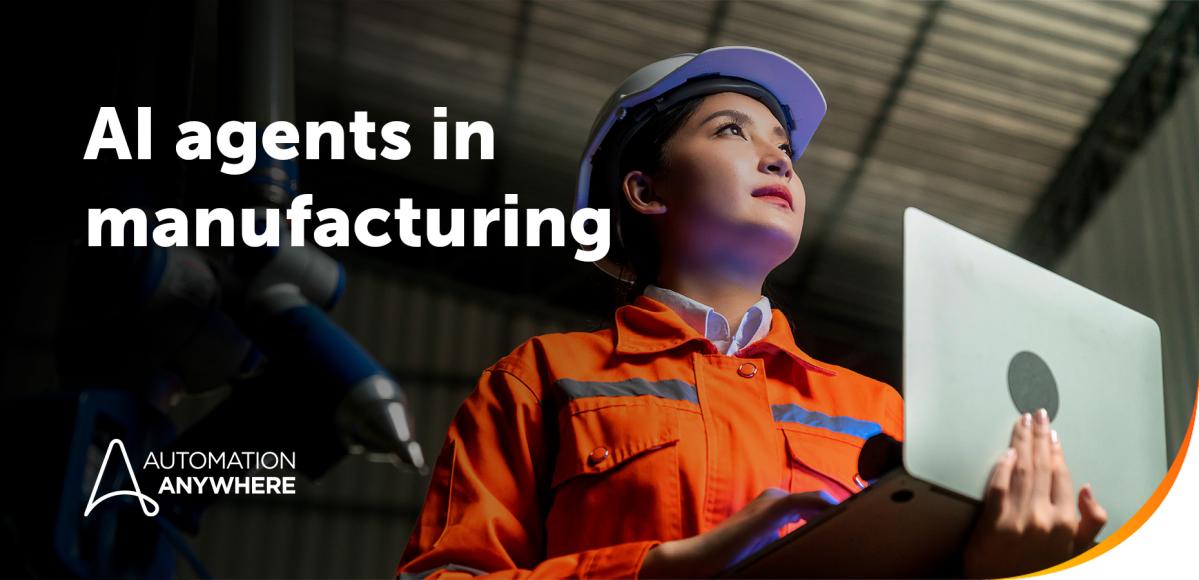- Login
- Search
- Contact Us
-
Have a question? Our team is here to help guide you on your automation journey.
-
Explore support plans designed to match your business requirements.
-
How can we help you?
-
- AI
AI Without the Hype From pilot to full deployment, our experts partner with you to ensure real, repeatable results. Get Started
- Automation Anywhere AI
-
- Solutions
Featured Agentic Solutions
Accounts Payable Invoice automation—No setup. No code. Just results. Accounts Payable
Customer Onboarding Scale KYC/AML workflows. Customer Onboarding
Customer Support Keep queues moving, even at peak load. Customer Support
Healthcare RCM Revenue cycle management that runs itself. Healthcare RCM
- Products
Platform Features
- Agentic process automation (APA)
- Robotic Process Automation (RPA)
- View all Products
-
- Resources
Get Community Edition: Start automating instantly with FREE access to full-featured automation with Cloud Community Edition.
Featured
 Named a 2025 Gartner® Magic Quadrant™ Leader for RPA.Recognized as a Leader for the Seventh Year in a Row Download report Download report
Named a 2025 Gartner® Magic Quadrant™ Leader for RPA.Recognized as a Leader for the Seventh Year in a Row Download report Download report- Become an Expert
- Developer Tools
- Get Support
- View all resources
-
- Partners
Find an Automation Anywhere Partner Explore our global network of trusted partners to support your Automation journey Find a Partner Find a Partner
- Find a Partner
- For Partners
-
Blog
Smarter, Faster, Factory-Ready: AI Agents at Work in Manufacturing
Navigate to content
- What are AI agents in manufacturing?
- Agentic process automation: Breaking down manufacturing silos
- Advantages of AI agents in manufacturing
- Use cases for AI agents in manufacturing
- How AI agents work in manufacturing environments
- Key features to look for in an agentic automation platform
- How Automation Anywhere powers autonomous manufacturing
- FAQ: AI agents in manufacturing
- How do AI agents differ from traditional automation in manufacturing?
- What manufacturing processes benefit the most from AI-driven agents?
- Can AI agents adapt to supply chain disruptions in real time?
- How do AI agents support quality control in high-precision environments?
- How do AI agents work alongside human operators?
- Do manufacturers need to modernize their IT infrastructure before implementing AI agents?
- The next step in manufacturing excellence

- What are AI agents in manufacturing?
- Agentic process automation: Breaking down manufacturing silos
- Advantages of AI agents in manufacturing
- Use cases for AI agents in manufacturing
- How AI agents work in manufacturing environments
- Key features to look for in an agentic automation platform
- How Automation Anywhere powers autonomous manufacturing
- FAQ: AI agents in manufacturing
- How do AI agents differ from traditional automation in manufacturing?
- What manufacturing processes benefit the most from AI-driven agents?
- Can AI agents adapt to supply chain disruptions in real time?
- How do AI agents support quality control in high-precision environments?
- How do AI agents work alongside human operators?
- Do manufacturers need to modernize their IT infrastructure before implementing AI agents?
- The next step in manufacturing excellence
Manufacturing has always been a driver of innovation and economic growth. But today, rising competition, supply chain volatility, and pressure to cut costs are pushing manufacturers to find smarter, faster ways to work.
That’s where AI agents come in. These autonomous, decision-making systems go beyond traditional automation by adapting in real time, streamlining production, reducing downtime, and improving quality control.
In this post, we’ll break down what AI agents actually are, how they work in a manufacturing environment, and how leading manufacturers are already using them to transform operations.
What are AI agents in manufacturing?
AI agents in manufacturing are autonomous systems that monitor, analyze, and control production processes—without needing constant human input. Unlike traditional automation, which follows fixed rules and often requires manual oversight, AI agents are intelligent, action-enabled assistants that make decisions and take action in real time to achieve specific goals.
Agentic process automation: Breaking down manufacturing silos
Agentic process automation (APA) marks a major shift for manufacturers. Instead of relying on isolated AI tools tied to specific systems—like enterprise resource planning (ERP), manufacturing execution systems (MES), or quality management systems (QMS)—APA empowers AI agents to work across them all.
This cross-functional capability breaks down long-standing silos and creates a connected production environment where data, decisions, and actions flow seamlessly. The result? Greater efficiency, faster responses to disruption, and a more agile manufacturing operation that can adapt in real time to shifting market demands.
Advantages of AI agents in manufacturing
In the competitive landscape of manufacturing, the quest for enhanced efficiency and sustainability is more critical than ever. AI agents have emerged as powerful allies in this pursuit, offering innovative solutions that transform traditional processes and afford the following advantages:
Increased efficiency and throughput
AI agents optimize production scheduling and resource allocation, significantly increasing output while reducing waste. For instance, manufacturers leveraging AI-driven scheduling can dynamically adjust production timelines based on real-time demand forecasts, leading to improved throughput and resource utilization.
Better quality control, fewer defects
With the integration of AI vision systems and predictive analytics, AI agents can dramatically reduce defect rates. These systems continuously monitor production quality and automatically adjust parameters to maintain high standards, creating closed-loop quality processes that enhance overall product integrity.
Predictive maintenance and reduced downtime
AI agents bring a proactive, data-driven approach to equipment maintenance. By continuously monitoring performance data and identifying anomalies, they help manufacturers prevent costly disruptions, reduce unplanned outages, and improve overall asset reliability. This leads to more consistent production, better use of maintenance resources, and smarter inventory planning for critical parts.
Resource optimization and sustainability
AI agents also play a crucial role in optimizing energy usage, material consumption, and waste reduction. By analyzing operational data, they can identify inefficiencies and suggest improvements, contributing to a more sustainable manufacturing process.
Use cases for AI agents in manufacturing
AI agents aren’t just theoretical—they’re already reshaping how manufacturers operate. By bridging disconnected systems and acting in real time, they help streamline everything from equipment maintenance to inventory decisions. This cross-functional intelligence empowers teams to respond faster, operate more efficiently, and reduce operational risk.
Below are some of the most impactful use cases in action:
Minimizing downtime with early intervention
Unplanned downtime can be a costly disruption. AI agents help manufacturers stay ahead by detecting early warning signs in equipment performance and automatically scheduling maintenance before issues escalate, keeping production lines running smoothly.
Real-time quality inspection
AI agents equipped with vision systems scan for defects as products move down the line, catching issues faster and reducing the need for manual rework. This leads to higher-quality output and happier customers.
Dynamic production planning
In industries like food processing, where demand changes fast, AI agents help teams move beyond static production schedules. By factoring in real-time demand and supply chain shifts, they keep production agile and efficient.
Smarter inventory and supply chain decisions
AI agents analyze sales trends, inventory levels, and supplier data to fine-tune ordering and reduce overstock. That means fewer delays, lower carrying costs, and better alignment between supply and demand.
Energy optimization at scale
AI agents continuously adjust energy usage based on current workloads and facility needs—cutting costs and reducing emissions. It’s a smarter, more responsive approach than fixed energy schedules.
How AI agents work in manufacturing environments
AI agents operate as autonomous control systems, constantly sensing their surroundings, analyzing data, and taking action to keep operations running smoothly.
Here's how they work, step by step:
1. Real-time data collection and perception
AI agents start by collecting continuous data from IoT devices, sensors, and connected manufacturing systems. This includes everything from machine speeds and temperatures to inventory levels and environmental conditions. With this constant stream of input, AI agents gain a real-time view of the factory floor.
2. Analysis and learning
Once the data is collected, AI agents apply machine learning models and predictive analytics to detect trends, spot anomalies, and forecast potential disruptions, like equipment failures or production slowdowns. This learning process allows them to move beyond static rules and adapt based on context.
3. Autonomous decision-making and action
Unlike traditional automation, AI agents don’t just follow predefined steps. They make decisions on the fly—adjusting schedules, rerouting tasks, or triggering maintenance—based on what’s happening in the moment. If a machine starts underperforming, the agent can take action immediately to keep production on track.
4. Exception handling and workflow adaptation
When something goes wrong, AI agents don’t stop everything—they adapt. They detect exceptions, determine the best corrective action, and execute it autonomously. Over time, they learn from these incidents to improve future responses, becoming more effective with every cycle.
5. Integration and orchestration
To drive real impact, AI agents connect with enterprise resource planning (ERP), manufacturing execution systems (MES), and supply chain platforms. This allows them to coordinate activity across planning, production, and logistics—breaking down silos and creating truly end-to-end optimization.
Key features to look for in an agentic automation platform
As manufacturers look to scale AI-powered automation across their operations, choosing the right agentic process automation (APA) platform becomes critical. Not all platforms are built for the complexity of manufacturing environments, so it’s important to evaluate solutions with the right capabilities in mind.
Whether you're starting small or scaling enterprise-wide, here are the essential features to look for in a modern APA platform:
- End-to-end orchestration
Connect and coordinate workflows across ERP, MES, QMS, and other core systems to eliminate silos and streamline operations. - Autonomous, adaptive AI
AI agents should be capable of making real-time decisions and adjusting to changing production conditions—without manual input. - Real-time analytics and continuous learning
Look for built-in predictive analytics and machine learning capabilities that allow AI agents to improve performance over time. - Low-code/no-code customization
Empower manufacturing teams to build and modify AI agents easily, accelerating deployment and reducing reliance on developers. - Built-in security, compliance, and governance
Ensure the platform protects sensitive data and supports regulatory compliance across your manufacturing environment.
How Automation Anywhere powers autonomous manufacturing
At Automation Anywhere, we’ve built our Agentic Process Automation System to meet the specific needs of modern manufacturing. From advanced analytics and seamless system integration to low-code development tools, everything is designed to help manufacturers deploy AI agents quickly, scale with confidence, and see real results.
Take Mars, for example. With 475 digital workers deployed, their teams have saved over 500,000 hours—freeing people from repetitive work, accelerating time-to-market, and driving greater efficiency across the business. That’s the kind of impact APA is already delivering on the factory floor.
FAQ: AI agents in manufacturing
Still curious? Here are a few common questions we hear from manufacturers exploring AI agents.
How do AI agents differ from traditional automation in manufacturing?
AI agents use advanced analytics and machine learning to make autonomous decisions, while traditional automation relies on predefined rules and manual intervention.
What manufacturing processes benefit the most from AI-driven agents?
Predictive maintenance, quality control, production scheduling, and supply chain management are key areas where AI agents add measurable value.
Can AI agents adapt to supply chain disruptions in real time?
Yes—they continuously analyze data from across systems and can adapt production plans or resource allocations to minimize impact when disruptions hit.
How do AI agents support quality control in high-precision environments?
AI agents use vision systems and analytics to monitor product quality in real time and adjust processes automatically to maintain consistency.
How do AI agents work alongside human operators?
They automate repetitive tasks, surface insights, and support decision-making—giving operators more time to focus on high-impact work.
Do manufacturers need to modernize their IT infrastructure before implementing AI agents?
Not necessarily. Many APA solutions (including ours) are designed to work with your existing tech stack, so you can start small and scale over time.
The next step in manufacturing excellence
Manufacturers are already using AI agents to reduce downtime, boost quality, and respond faster to market shifts. As the pressure to do more with less grows, agentic process automation offers a clear path forward—one that’s scalable, intelligent, and built for real-world complexity.
Want to see it in action? Schedule a demo and explore how AI agents can streamline your operations and drive measurable impact from day one.
Ready to bring AI to the factory floor?
About Automation Anywhere Staff
Get to know the Agentic Process Automation System.

For Students & Developers
Start automating instantly with FREE access to full-featured automation with Cloud Community Edition.


